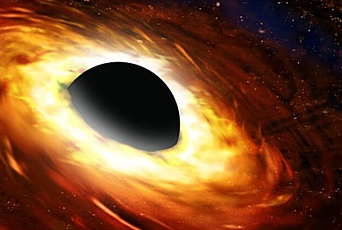
Aiming exascale at black holes
In 1783, John Michell, a rector in northern England, "proposed that the mass of a star could reach a point where its gravity prevented the escape of most anything, even light. The same prediction emerged from [founding IAS Faculty] Albert Einstein’s theory of general relativity. Finally, in 1968, physicist [and Member (1937) in the School of Math/Natural Sciences] John Wheeler gave such phenomena a name: black holes."
Despite initial skepticism that such astrophysical objects could exist, observations now estimate that there are 40 quintillion (or 40 thousand million billion) black holes in the universe. These black holes are important because the matter that falls into them "doesn’t just disappear quietly," says James Stone, Professor in the School of Natural Sciences.
"Instead, matter turns into plasma, or ionized gas, as it rotates toward a black hole. The ionized particles in the plasma 'get caught in the gravitational field of a black hole, and as they are pulled in they release energy,' he says. That process is called accretion, and scientists think the energy released by accretion powers many processes on scales up to the entire galaxy hosting the black hole."
To explore this process, Stone uses general relativistic radiation magnetohydrodynamics (MHD). But the equations behind MHD are "so complicated that analytic solutions — finding solutions with pencil and paper — [are] probably impossible." Instead, by running complex simulations on high-performance computers like Polaris and Frontier, Stone and his colleagues are working to understand how radiation changes black hole accretion.
"The code created by Stone’s team to investigate black hole accretion can be applied to other astrophysical phenomena. Stone mentions that he 'can use the same [...] code for MHD simulations to follow the motion of cosmic rays,' high-energy particles also produced by black holes."
Read more at ASCR Discovery.


